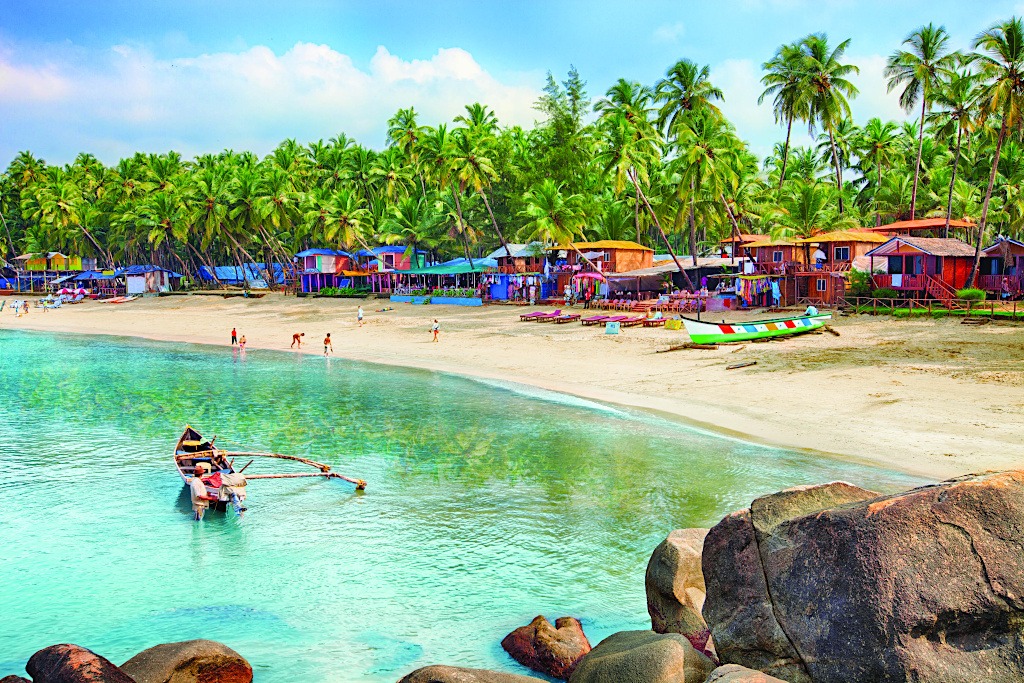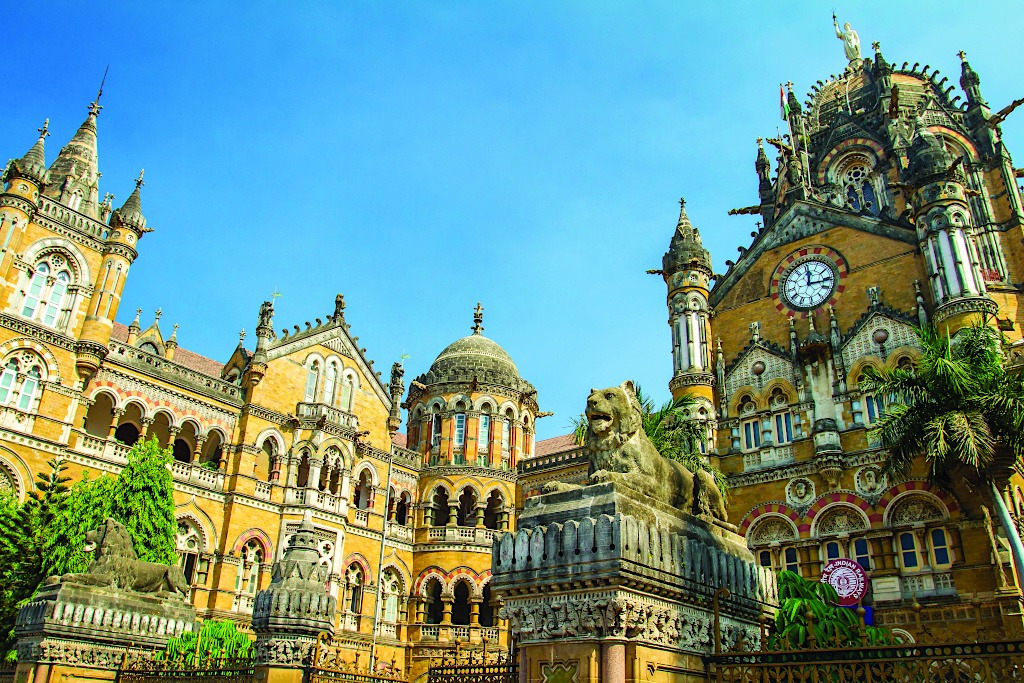Directly south of Mumbai by plane or train is India’s smallest state. Goa is unique from the rest of India because of the different cultural influences it has absorbed. Unlike the rest of India, Goa was not a British but a Portuguese colony until its liberation in 1961, hence its architecture, cuisine, culture, and copious churches all reflect this.
Once a city teeming with merchants, sailors, and missionaries, what’s now known as Old Goa became the capital of Portuguese India in the 16th century, but was abandoned in the 18th century after it was ravaged by cholera and malaria epidemics. It’s now a UNESCO World Heritage Site, and bustles with tourists who come to marvel at several Christian landmarks that are the most notable evidence of a once-great city. The most revered is the Basilica of Bom Jesus, which holds the mortal remains of St Francis Xavier, co-founder of the Jesuits. This and other impressive liturgical landmarks, including Se Cathedral and the Church of St Francis of Assisi, face what may once have been a flourishing market place, but is now an expanse of manicured lawns. Beyond here is evidence of other religious orders, including the fortress-like Church of Our Lady of the Rosary and the ruins of the Church of St Augustine whose one remaining church tower stands defiantly on Holy Hill.
The Portuguese relocated their capital 10km west of here to Panaji. This fascinating city has a wealth of Portuguese heritage, most notably the old Latin quarter, Fontainhas. Here, brightly painted villas with ornate overhanging balconies line the picturesque streets. Quaint shops, art galleries, and bakeries enhance the tranquil Mediterranean vibe.

Beach in Goa
Photo: Lena Serditova
Housed in a grand mansion built in the 1800s, Panjim Inn retains a bygone-era ambience. The rooms of this heritage boutique hotel are decorated with period furniture, and its Verandah Restaurant is a charming spot to sample authentic Goan cuisine.
Built in a Portuguese Baroque style, the nearby Our Lady of the Immaculate Conception Church is painted a brilliant white in recognition of the Virgin Mary, resulting in a church that resembles an immaculately iced wedding cake with its zigzag stairs and striking bell tower.
Goa is also a subculture enclave, a throwback from when it was the eventual destination for many travelers on the Hippie Trail. Tens of thousands of hippies embarked on the epic overland journey from Europe to India during the 1960s and 1970s, in what’s considered a pioneering example of alternative tourism. They came from Europe, America, and Australia in search of spiritual enlightenment, or to escape a rigid and conventional Western lifestyle. Once in India, they often flocked to the beaches of Goa. It’s said that many hippies would burn their passport upon arrival in Goa, vowing never to return home.
Anjuna Beach in North Goa became one of the best-known hippie hangouts, a place synonymous with peace, love, and wild all-night parties. Hippies spurned taboos such as nudity, group sex, and homosexuality, so some of those handsome, long-haired, hashish-smoking dudes most likely experimented with all kinds of peace, free love, and euphoria when in Goa.
The Hippie Trail flourished until the late 1970s, when revolution in Iran and the Russian invasion of Afghanistan closed the overland route to Western travelers. But that didn’t bring an end to Goa’s hippie allure. They simply had to come by other means and the rise in affordable air travel provided a less adventurous but more direct route to this hippie paradise.
Although it has evolved since those hashish-mellowed days of decades past, Goa retains a chilled and tolerant outlook as well as plenty of hippie heritage. Established in the 1970s as a place where travelers could exchange or sell their belongings to help fund their stay here in paradise, Anjuna Flea Market is a popular open-air bazaar held right by the beach every
Wednesday. Its stalls sell trinkets, handicrafts, and souvenirs from across India, including Buddha and Shiva statues, healing crystals, Tibetan singing bowls, Himalayan yak wool hoodies, and other alternative lifestyle essentials. Some of the vendors are foreigners, hippies old and new, often selling their own handmade clothing and jewelry or offering services such as piercings or dreadlocks, perfect for those wishing to cultivate a fun and psychedelic hippie-chic vibe.


